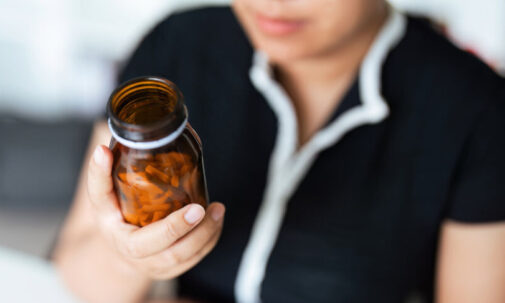
My sudden cardiac arrest survival story: Part two

If you missed part one of my story, click here to read about the quick actions my kids took when I went into cardiac arrest.
Here’s where we left off: Police officer Rita Kelly had arrived at our home, and she had taken over performing CPR on me from my son Brendan. The Barrington, Ill. Fire Department team of paramedics arrived within two minutes to take over the life saving process from Officer Kelly…
A sustained heart beat is the primary goal, and that is done by the use of a portable AED, an automated external defibrillator. Think of the TV shows, when they apply the paddles to the chest, and the patient’s body surges once the shock is administered.
Four attempts are made, and the results are unsuccessful…my heart can not beat on its own. The fifth attempt, which is the last they would try on me before pronouncing me dead, is a success. I am in God’s hands, and He wants me to live!
While at home, the paramedics need to administer adrenaline and other fluids to me as part of their life-saving process. The need to do so becomes more challenging with a patient who has had a cardiac arrest… the heart has stopped, there is no blood pumping and the veins which would would transport the blood can’t be found, or if found, will soon collapse. How then, can they get me the necessary fluids?
Intraosseous infusion ( IO), of course!
IO is a process of injecting fluids and medications directly into bone marrow, considered a stable entry point. The technique is used when intravenous access isn’t feasible. Our Barrington Fire Department paramedics are trained in how to do this on scene, and they do it on me. But first they need to find a spot of entry on the body to be able to reach bone marrow, and they need a special device to do so… believe it or not, a gun. Specifically, a B.I.G.
B.I.G. stands for bone injection gun. It explains why when I eventually get out of the hospital, my left knee area aches for several weeks afterwards, as that’s where they shot me with the B.I.G. An achy knee for a few weeks, though, is a small price to pay for a sustained life indeed!
Having been stabilized at home, I am rushed to Advocate Good Shepherd Hospital, where some preliminary tests are run… blood work, blood gases, etc., in the emergency room.
From the ER, I am transferred to to the cardiac catheterization lab, where a detailed examination of my heart is performed. The procedures here determine if a patient has a disease of the heart muscle, heart valves or any coronary artery disease. An angiogram is performed to determine where arteries are blocked. My results are good, if not good enough…no major blockage beyond what would be considered “normal” for a 56 year-old man. On to the next step!
Once the results of the testing in the cath lab are known, the decision is made to put me on to the Arctic Sun protocol. Arctic Sun is a brand name for a procedure known as therapeutic hypothermia (TH). TH is a relatively new procedure in which a patient is cooled and then slowly rewarmed in order to increase the probability of maintaining long-term brain function. Specifically, the body is cooled down to about 90 degrees for about 24 hours, and then the body is slowly rewarmed to a a normal body temperature. (I am in a drug induced coma for this procedure). Scientists and physicians believe the cooling effects slow the metabolism and help protect the brain. TH has been successfully used worldwide to improve mortality and neurological outcomes in patients who have had a cardiac arrest.
Having survived the Arctic Sun process, and now wiggling my toes and fingers and giving a thumbs up when asked to do so, my recovery is well on its way. The next part of the journey includes the Good Shepherd Cardiac Team asking the question, “How do we help prevent Tom from having another cardiac arrest?”
The answer to that will be the subject of my next blog…
Related Posts
Comments
3 Comments
About the Author
Tom Gould, a Barrington resident and Advocate Good Shepherd Hospital patient, shares his journey after experiencing a sudden cardiac arrest.









Tom, no one is leaving comments that I’ve seen but be assured, we’re out here anxiously watching for the next episode. I thought I knew a lot about this topic given family experience with heart issues, but I’m learning a lot. Some is new technology (such as the B.I.G.), of course, but some is correcting old mis-conceptions.
Please keep this up!
I am sitting on the edge of my seat reading your blog. What a miracle!
I have learned so much from your blog regarding cardiac arrests and actually I thought I knew a lot previously. I was wrong and I am glad you are sharing this information with others so we can all be more informed.